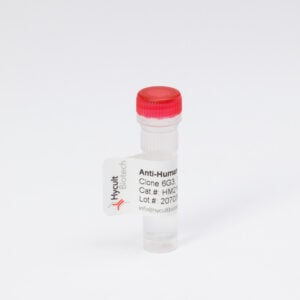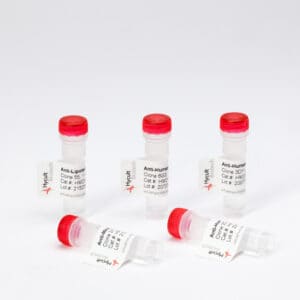
Monocytes/Macrophages, Mouse, mAb ER-HR3
€133.00 – €320.00
The monoclonal antibody ER-HR3 is reactive to the majority of mouse monocytes and a subset of mature resident macrophages, especially those located in hemopoietic organs. Whereas all other leukocytes are ER-HR3 negative, up to 70% of circulating monocytes stain positive with this monoclonal antibody. Furthermore, about 30% of bone marrow cells express the antigen. Other ER-HR3 positive macrophages can be found in the splenic red pulp, in the mesenteric lymphoid paracortex, interfollicular areas of Peyer’s patches and bone marrow. Few ER-HR3 positive cells are observed in the thymic cortex and the connective tissues of the gastro-intestinal tract, the dermis and the renal medulla. Epidermal Langerhans cells also express the antigen. The monoclonal antibody ER-HR3 can be used to identify and localize a very distinct mature tissue macrophage subpopulation found in various mouse organs and its distribution pattern is unique compared to that from other macrophage-specific antibodies. The antibody is especially suitable for ontogenic studies because ER-HR3 positive macrophages are closely related to hemopoietic islands, especially at erythropoietic sites.



